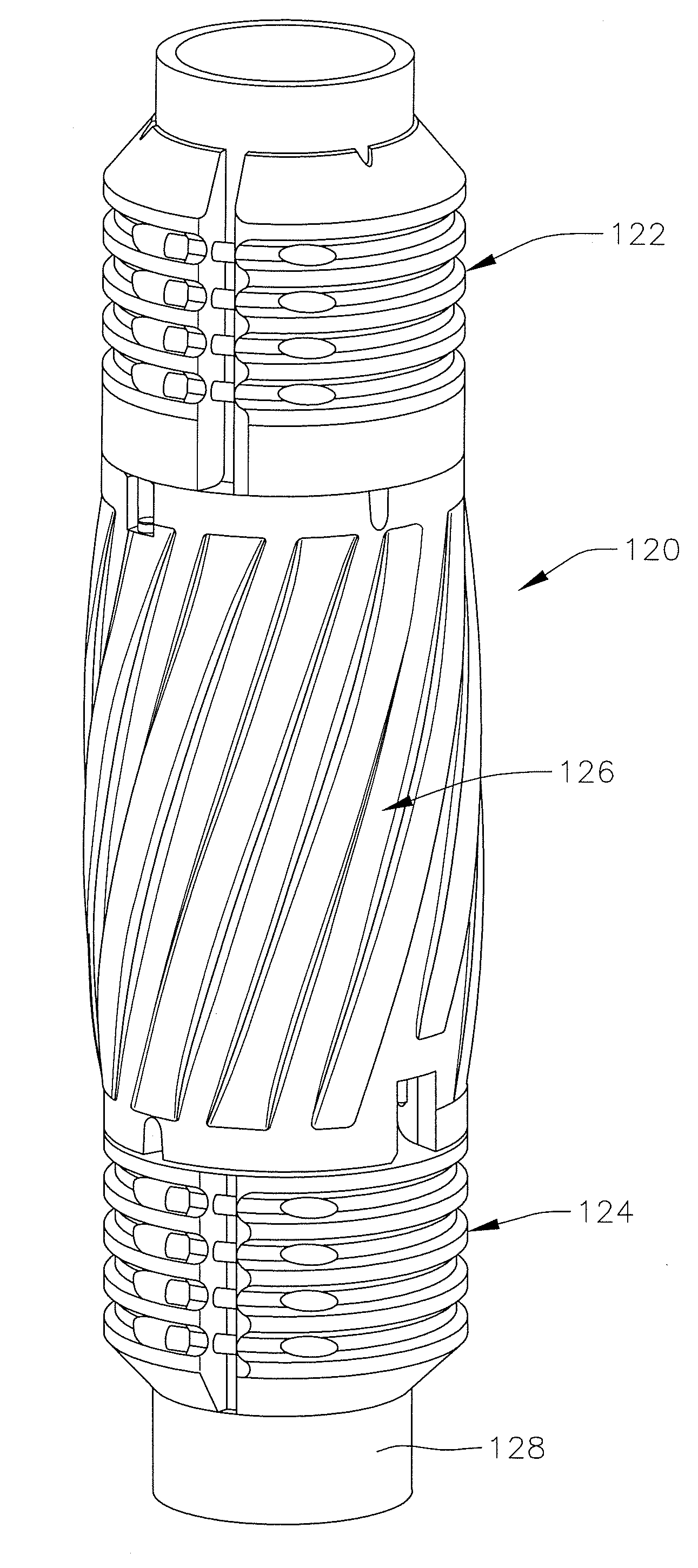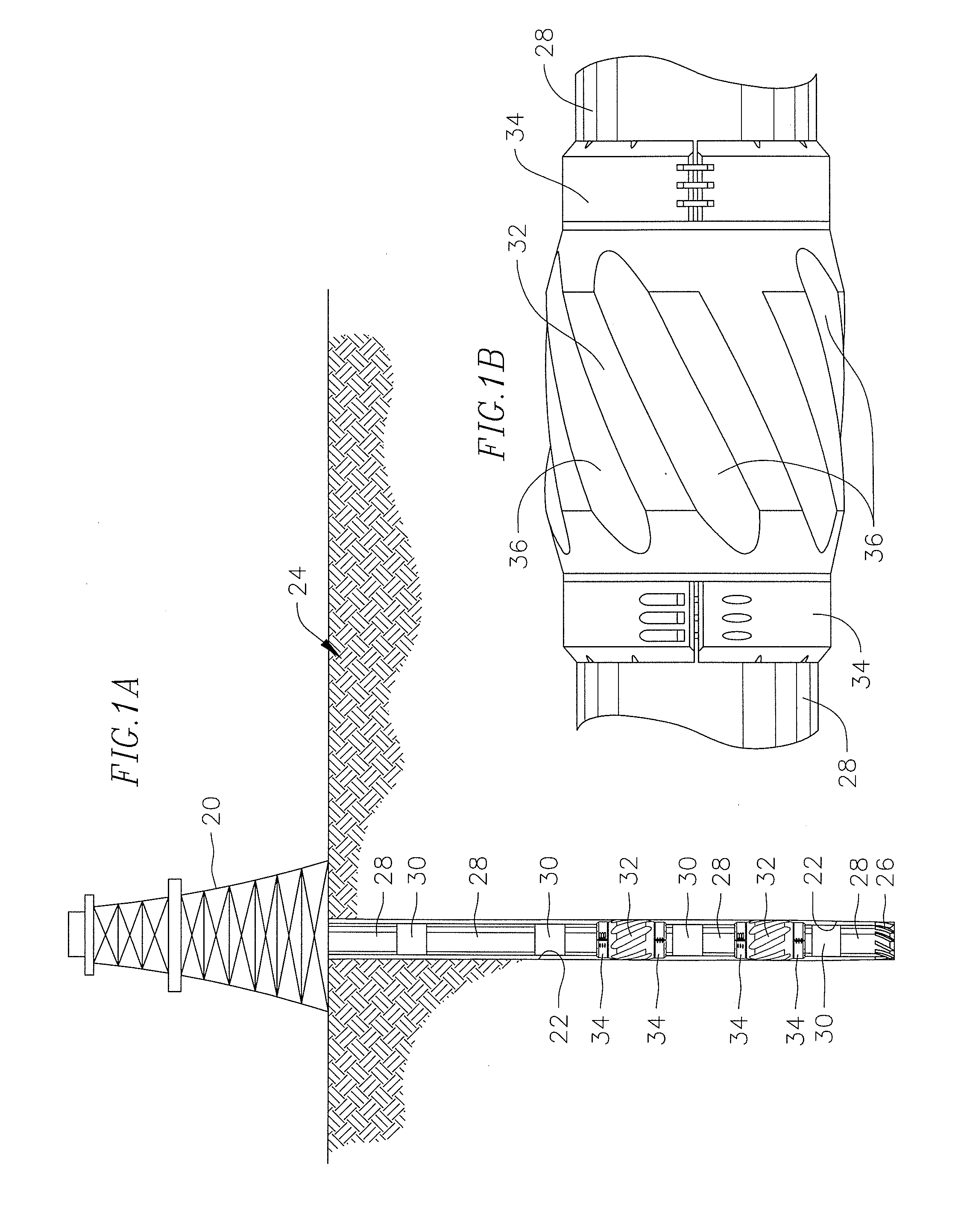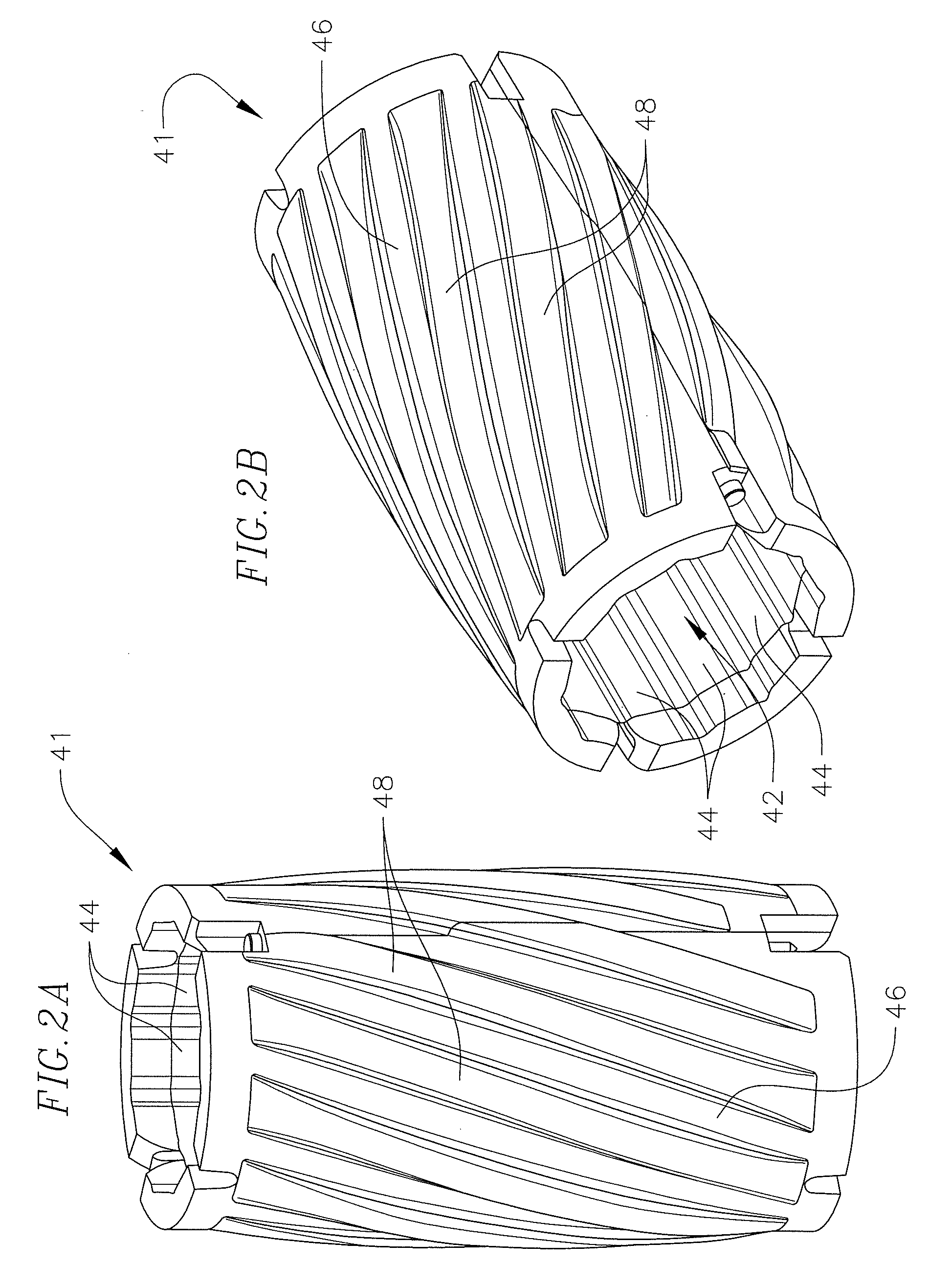Non-rotating casing centralizer
a centralizer and non-rotating technology, applied in the field of gas and oil production, can solve the problems of limited success of casing centralizers, significant deficiencies of each of these centralizers, and achieve the effect of reducing sliding and rotating torqu
- Summary
- Abstract
- Description
- Claims
- Application Information
AI Technical Summary
Benefits of technology
Problems solved by technology
Method used
Image
Examples
example
[0124]Performance testing was conducted with a test fixture that simulates performance in downhole environments. Testing conducted with the test fixture compared performance of the sleeve of this invention with a prior art drill pipe protector sleeve. Performance testing also was compared between the invention and a drill pipe tool joint operated in the absence of a drill pipe protector sleeve.
[0125]The test fixture tested performance of a sleeve on a drill pipe that rotated in a casing filled with mud while sliding downhole with specified side loads, with the drill pipe rotating at 120 rpm. A cement liner was used to simulate friction that develops in an open hole drilling environment.
[0126]Sliding COF (when sliding and rotating) and rotating COF (when sliding and rotating) were measured to compare performance (torque and drag reduction) of a sleeve corresponding to this invention (referred to as US-500) with a prior art drill pipe protector sleeve (referred to as SS-500). Test con...
PUM
 Login to View More
Login to View More Abstract
Description
Claims
Application Information
 Login to View More
Login to View More - R&D
- Intellectual Property
- Life Sciences
- Materials
- Tech Scout
- Unparalleled Data Quality
- Higher Quality Content
- 60% Fewer Hallucinations
Browse by: Latest US Patents, China's latest patents, Technical Efficacy Thesaurus, Application Domain, Technology Topic, Popular Technical Reports.
© 2025 PatSnap. All rights reserved.Legal|Privacy policy|Modern Slavery Act Transparency Statement|Sitemap|About US| Contact US: help@patsnap.com



